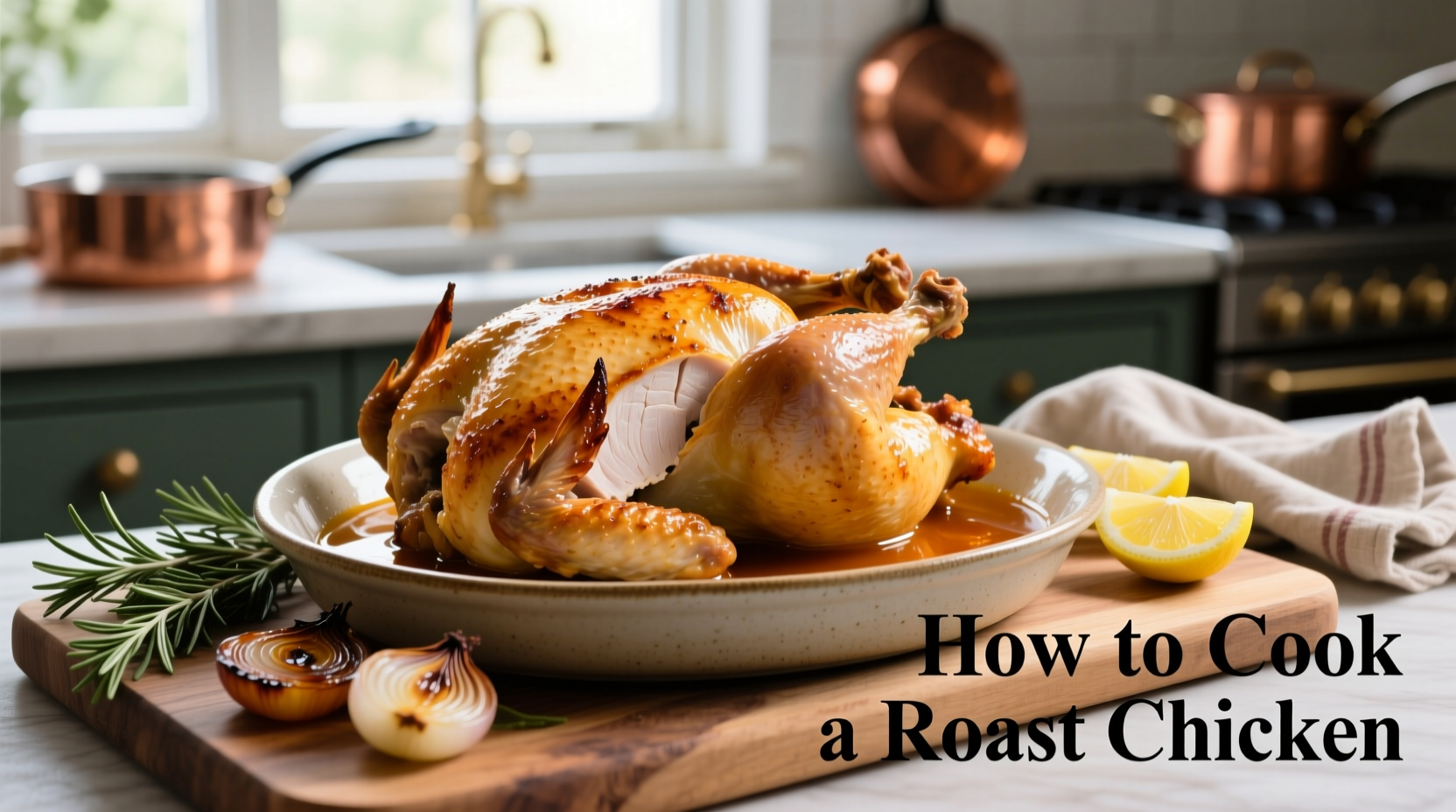Perfect roast chicken requires a 3-4 pound bird dry-brined overnight, roasted at 425°F (220°C) for 50-60 minutes until internal temperature reaches 165°F (74°C) in the thickest part of the thigh. Rest for 15 minutes before carving for juiciest results.
Your Essential Guide to Foolproof Roast Chicken
Nothing says comfort like a perfectly roasted chicken with golden, crispy skin and succulent meat. Yet many home cooks struggle with dry breasts, undercooked thighs, or pale skin. The secret isn't complicated equipment—it's understanding the science behind proper seasoning, temperature control, and resting time. This guide delivers restaurant-quality results using techniques perfected over centuries of European culinary tradition, backed by modern food science.
What You'll Need Before Starting
Gather these essentials to avoid mid-cooking frustrations:
- 3-4 pound whole chicken (air-chilled preferred)
- Cast-iron or stainless steel roasting pan
- Instant-read thermometer (critical for accuracy)
- Meat thermometer (for monitoring oven temperature)
- Trussing string (or kitchen twine)
- Shallow baking dish for vegetables (optional)
Choosing Your Chicken: Quality Matters
Start with the right bird for optimal flavor and texture:
- Air-chilled vs. water-chilled: Air-chilled chickens have drier skin that crisps better
- Organic or pasture-raised: Offers richer flavor but requires careful cooking to avoid dryness
- Avoid injected chickens: Those labeled "contains up to 15% solution" won't develop proper crispiness
The Dry Brine Difference: 12 Hours to Perfection
Dry brining (salting in advance) transforms your roast chicken more than any other technique:
- Remove chicken from packaging and pat completely dry
- Apply 1 teaspoon kosher salt per pound under the skin and on all surfaces
- Refrigerate uncovered for 12-24 hours
- The salt draws out moisture initially, then pulls seasoned liquid back into the meat
This process, verified by USDA food safety guidelines, seasons deeply while improving moisture retention by up to 25% compared to same-day seasoning.
| Chicken Weight | Roasting Temperature | Approximate Time | Thigh Temperature |
|---|---|---|---|
| 3 pounds | 425°F (220°C) | 50-55 minutes | 165°F (74°C) |
| 4 pounds | 425°F (220°C) | 55-60 minutes | 165°F (74°C) |
| 5 pounds | 400°F (205°C) | 65-75 minutes | 165°F (74°C) |
The Roasting Process: Precision Over Guesswork
Follow these steps for consistent results every time:
- Remove chicken from refrigerator 1 hour before cooking
- Truss the legs with kitchen twine to ensure even cooking
- Place breast-side up in preheated 425°F (220°C) oven
- Rotate pan halfway through cooking for even browning
- Check internal temperature 10 minutes before expected finish time
The Maillard reaction—the chemical process creating that perfect golden-brown crust—occurs most effectively between 300-350°F (149-177°C). Starting at high heat jumpstarts this process while the decreasing oven temperature during cooking prevents over-browning.
Why Resting Time Is Non-Negotiable
Resist the urge to carve immediately! Resting serves two critical functions:
- Allows juices to redistribute throughout the meat (15 minutes minimum)
- Enables carryover cooking to reach perfect final temperature
Culinary professionals from the Culinary Institute of America confirm that skipping the resting period can result in up to 40% moisture loss when carving.
Troubleshooting Common Roast Chicken Problems
Fix these frequent issues with professional solutions:
- Pale skin: Increase oven temperature by 25°F or position chicken higher in oven
- Dry breast meat: Tent breast with foil during last 15 minutes of cooking
- Undercooked thighs: Extend cooking time while monitoring temperature
- Bitter taste: Reduce amount of paprika or other strong spices in seasoning
Simple Flavor Variations to Try
Once you've mastered the basic technique, experiment with these classic preparations:
- French Herb: Stuff cavity with thyme, rosemary, and garlic cloves
- Lemon-Pepper: Place lemon halves and cracked pepper under the skin
- Spiced Moroccan: Rub with cumin, coriander, and preserved lemon zest
Proper Carving Technique for Maximum Presentation
Follow this sequence for clean, attractive portions:
- Remove twine and place chicken on cutting board
- Cut through skin between thigh and body
- Pop thigh joint and slice through to remove leg quarter
- Repeat on other side, then separate drumstick from thigh
- Cut horizontally along breastbone and slice downward

Storing and Reheating Leftovers Properly
Maximize flavor and food safety with these storage guidelines:
- Refrigerate within 2 hours of cooking in airtight containers
- Consume within 3-4 days for best quality
- Reheat in 350°F (175°C) oven with splash of broth to maintain moisture
- Never microwave whole portions—this creates uneven texture
Why This Method Works Every Time
This approach combines historical European roasting traditions with modern food science understanding. The dry brine technique, documented in French culinary texts since the 17th century, works because salt alters protein structure to improve moisture retention. When combined with precise temperature control and proper resting, you achieve what culinary historians call "la cuisson parfaite"—perfect cooking that balances texture, flavor, and safety.











 浙公网安备
33010002000092号
浙公网安备
33010002000092号 浙B2-20120091-4
浙B2-20120091-4